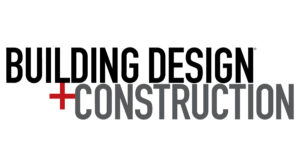Outpatient facilities dominate healthcare construction as demand for community-based care grows
Editor's Note
Healthcare construction has been seeing a shift toward outpatient facilities, with medical office buildings (MOBs) and similar structures taking center stage, Building Design + Construction November 1 reports. Citing data from different sources, including the MOB/outpatient facilities 2024 survey, American Society for Health Care Engineering, JLL’s Medical Outpatient Building Perspective report, and the 2024 State of Healthcare Report from construction company Robins & Morton, the article noted MOBs and outpatient facilities now account for nearly half (42%) of healthcare construction spending, a sharp rise from just 20% in 2012. This reportedly aligns with a 12% increase in outpatient facilities from last year.
Real estate and construction experts are responding to this demand by optimizing designs for efficiency, accessibility, and cost-effectiveness, aiming to bring medical services closer to communities. The industry’s focus on outpatient growth is financially motivated as well, as outpatient revenues at many hospitals have climbed over 40% since 2020, according to the Robins & Morton report. However, the shift isn’t without challenges. Rising construction costs, interest rates, and a persistent shortage of skilled labor were cited by two-thirds of survey respondents as key hurdles.
According to David Glover, AIA, LEED AP, principal at Champlin Architecture, cost increases during bidding processes frequently result in budgets that exceed initial estimates by 20% or more. Alongside budget concerns, there are unique supply chain issues in healthcare construction—specific medical equipment like electrical switchgear and HVAC systems often face delays, made more complicated by stringent medical regulations and infection control standards. This gap between expectations and the reality of project costs and timelines forces design teams to create value within constrained budgets, minimizing space and allowing no margin for error, Gina Chang, AIA, EDAC, principal at CO Architects, noted in the article.
In addition to navigating financial and logistical issues, healthcare design and construction firms are increasingly turning to modular and prefabricated solutions, noted Jeanmarie Zimmerman, ACHA, AIA, EDAC, CCIDC, healthcare and planning strategy leader at AE Works. Modular components—such as prefab wall panels, MEP racks, and kit-of-parts systems—are becoming popular for their cost and time-saving benefits, with nearly half of survey respondents incorporating modular features into their recent projects. Many firms now view modular design as essential for streamlined workflows and flexibility in meeting patient needs. Likewise, LEAN construction principles and value engineering approaches are proving beneficial in controlling project costs while fostering creativity among project teams.
Healthcare facilities are also innovating to meet patient-centered care needs. For example, May Architecture designed a “universal room” in an oncology center that allows multiple specialists to provide consultations, infusions, and phlebotomy services in one location. LPA Design Studios has incorporated wellness-focused amenities like healing gardens, indoor-outdoor pools, and gym facilities into their designs to support holistic patient care. Emphasizing the value of adaptability, respondents reported using technological tools like 360-degree project photography and virtual reality to enable real-time updates and efficient project management. In addition, MOB developers are experimenting with eco-friendly and tech-driven amenities, such as all-electric power for cancer centers, vegetable gardens, drone delivery zones, and data-driven patient check-in and flow systems. As Angela Kolosky, ACHA, AIA, NCARB, LEED AP BD+C, healthcare planning market leader at DesignGroup, noted, these innovations allow clients to realize cost-effective operational models with a real impact on patients and staff while meeting the return-on-investment of the building.
With outpatient demand on the rise, healthcare leaders and design teams alike are challenged to balance patient-centered designs, modular and flexible solutions, and strict cost controls. The move to create sustainable, adaptable, and community-focused facilities highlights the industry’s emphasis on both patient care and financial sustainability, with outpatient settings now integral to the future of healthcare delivery.
Read More >>

 Free Daily News
Free Daily News